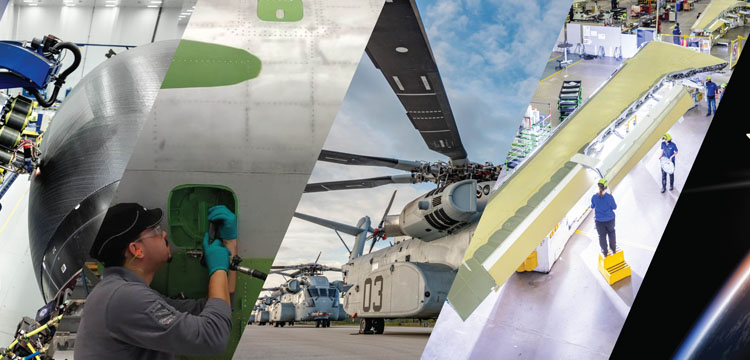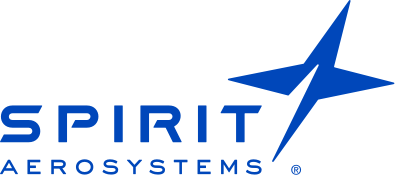

To Industrialize Hypersonic Weapons, Collaboration Is Critical

Reimagining how to achieve outcomes that transition to industrialization
Author: Kim Caldwell
Hypersonic flight systems are a complex engineering feat capable of transforming defense strategy. It makes sense that it’s a top priority for the DoD. Yet in many ways, development and maturation of enabling technologies that provide this capability have been approached in way that has not supported industrialized solutions.
A reinvigorated focus on foundational capabilities and prioritized DoD investments is encouraging. We need to reimagine how we can collectively ramp-up design and manufacturing agility and overcome one of our biggest engineering challenges. Not only do we need to work at a faster pace to keep up with the DoD’s demands, but we must also work collaboratively across disciplines in a way we’ve not done before. Transition from applied science to industrialization is a key component of success and should be addressed in the early stages of the development cycle.
University consortiums, like the recently developed University Consortium for Applied Hypersonics (UCAH), are an important part of this equation. It’s where key players will be brought together to collaborate, advance technology, and develop the workforce. But we have an opportunity to approach the typical consortium process in a fresh and exciting way—from who’s involved to how we collaborate, what tools we use to how we budget.
There’s more we as consortium members, industry, university, and government can do to propel our country’s place in the hypersonics race and to benefit the broader US defense industry. To change the trajectory, we need to transform what we are used to doing by sparking a dialogue around how we might contribute in new, more impactful ways.
Ways to invigorate how consortiums can expand their impact
Due to a previous start-stop cycle of funding and program investments, hypersonics technology development in the US is at a deficit. We’ve not invested in our core research and development with a sustainable approach. Now faced with an imperative that demands transition from applied research and prototyping to full-scale production, we need to reinvigorate our research capabilities and drive growth in a workforce that will sustain production well into the future.
UCAH will help with both.
We will be able to conduct early-stage research targeted at applied problem-sets and technology development efforts. As part of the consortium, Spirit hopes to bring our design for manufacturability mindset to ensure products are designed for industrialization from the start, something that could transform the university research approach, speed up the development process and help translate tangible outcomes for the industry.
The consortium will also help with much-needed workforce development. We’ll work with student engineers to train and prepare them with the skills they’ll need to succeed.
But workforce development is also an area consortiums—and universities and trade schools more broadly—need to immediately prioritize and focus efforts on even more. We’re behind, knowing the expectation is to deliver the capability in the near term, but it’s not too late if we change our behaviors now. If we desire to build true production capability at high-rate and high-scale, it’s not just training those who will design, but training the future production and factory worker. People-power on the production floor will be critical to produce the number of weapons the DoD requires.
We have a start. Industry has people with the needed skills in the workforce already, with some organizations offering continued education opportunities to further build and expand upon skills. But as the manufacturing workforce continues to evolve, we need new skillsets as well as younger people to fill the gap of an aging workforce. Training them earlier on the niche expertise hypersonics requires will bode well for future programs.
How Government’s role could evolve
Clearly, the U.S. Government plays a key part in many facets. One of the most influential, though, is the budgeting process.
Imagine what outcomes consortiums could achieve if budget planning more closely mirrored the design phase’s agility. It could evolve as designs iterate rather than lock into one design per budget. It could enable more learnings that are applicable to current and future programs. And when industrialization partners are brought to the table from the start, it will inform design in a way that enables producible at-scale weapons before the cycle reaches the production floor, opening up additional opportunities for cost-savings over the program’s lifecycle.
What industry could do to keep pushing programs forward
Digital engineering holds an immense opportunity for industry contribution. Due to the nature of hypersonic weapons programs, it’s not always possible to test often and let fail—a necessary model to fast-track engineering programs. And it’s going to challenge us even more to develop ways in which we can push the envelope. That’s where investments in digital engineering are essential. When all aspects of design, product development and manufacturing are worked through digitally, we can accelerate the learning curve.
Investing in research and development outside of consortiums can be another way to push expertise forward. According to Spirit’s Vice President for Research and Development, Cindy Hoover, “Spirit invested over $55M in R&D and contract research in 2020, with a meaningful percentage of that going towards hypersonic-related solutions”. What we have already learned from that research, and will continue to learn and share, can help us expand our knowledge and expertise in the name of helping advance US capability and strategic advantage. If every industry partner continued to invest, collaborate and share, imagine how much further—and faster—we’d be able to innovate.
We also have a duty to our workforces. As the primary employers of current and future hypersonic technology experts, developing the future of our industry and prioritizing continued education opportunities for those who design and those who build will become even more critical as we look to advance hypersonic programs.
Moving forward
We have the capabilities to reach the ideal state for hypersonic flight systems production. Will it be easy? Not always. But now is the time to transform how we’ve traditionally done things. We have a great start—let’s build on the momentum UCAH affords us and work together to bring our nation closer to full-scale production.



